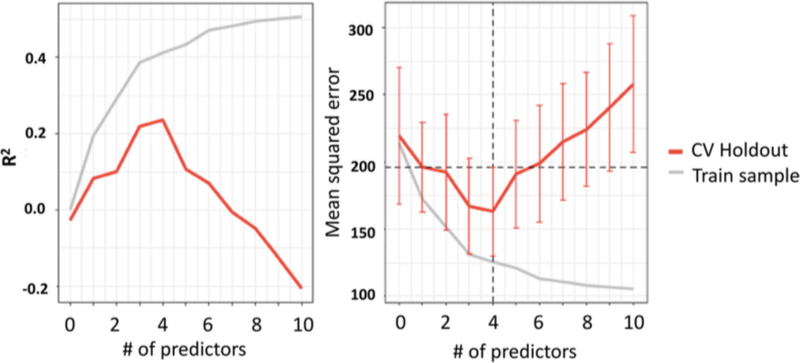Figure 3.
R2 and mean squared error for the training sample and the cross- validation as a function of the number of predictors. It is apparent that while adding more predictors explains a larger portion of the variance in the training sample, it yields diminishing returns for the cross-validation. In fact, not only are there diminishing returns, more than 4 predictors is actively detrimental to finding a reproducible solution. Our data also suggest that there is severe overfitting when too many predictors are included—the predictive R2 is negative, which indicates that the model is predicting noise, and that the predictions are actually worse than simply predicting the mean for everyone. Similarly, as the mean square error continually decreases for the training sample, the error decreases for up to 4 predictors in the CV Holdout, and then increases

